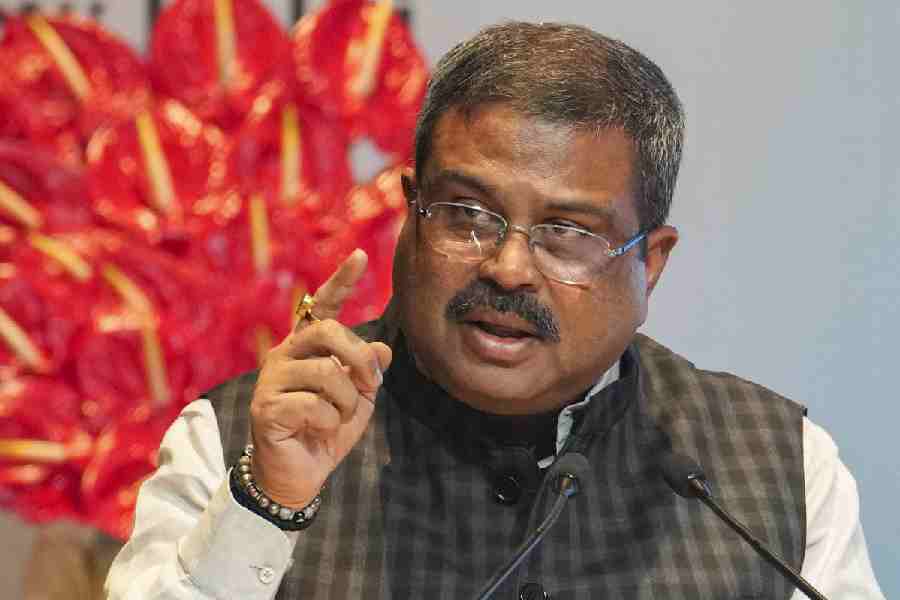 |
| Rahul Gandhi shares a campaign moment with Nikhil Kumar in Aurangabad. Picture by Suman |
Age sets them apart but many are the similarities that bind them. Nikhil Kumar (73) is to Bihar what Rahul Gandhi (43) is to India. Also, Aurangabad is to Nikhil what Amethi and Rae Bareli are to the Nehru-Gandhi family
Nikhil, who gave up the comfortable life in the Thiruvananthapuram Raj Bhavan after quitting as Kerala governor, is the son of former Bihar chief minister Satyendra Narayan Sinha, who represented this south Bihar seat for seven consecutive terms in the Lok Sabha. He is the grandson of Gandhian and freedom fighter Anugrah Narayan Sinha, the first deputy chief minister-cum-finance minister of Bihar.
Nikhil’s wife Shyama Singh, too, has represented the family bastion of Aurangabad in the Lok Sabha while his mother, Kishori Sinha, was an MP from north Bihar’s Vaishali seat.
The election brings to them similar challenges. While an unconventional candidate of an unconventional party (AAP), poet-turned-politician Kumar Biswas, is trying to turn Amethi’s pitch into an unusual battlefield, Nitish Kumar’s JD(U) has pitted a Koiri candidate, Bagi Kumar Verma, on a seat referred to as Bihar’s Chittorgarh for the dominance of upper caste Rajputs there. The seat has never sent a non-Rajput to the Lok Sabha.
Also pitted against Nikhil, the soft-spoken and suave former IPS officer who was Delhi’s police commissioner for quite some time, is the JD(U) MP-turned-BJP candidate, Sushil Kumar Singh, who is trying to ride a “Narendra Modi wave”.
But to Sushil’s chagrin, the voters, by and large, do not see a Modi wave.
“Yahan NaMo tamo kuchh nahin hai. Ladhai Nikhil babu aur Nitish Kumar ke beech hai (There is no such NaMo wave here. The fight is between Nikhil and Nitish),” says Buddhan Yadav at Bisunpur in the Rafiganj Assembly segment of Aurangabad seat.
Voters in Aurangabad — a caste cauldron 130km southwest of Patna, infamous for raging caste and class wars in the past — are weighing Narendra Modi on the scale of caste.
“Yahan bania jaati keval teen per cent hai, Modi ka hawa kaise banega (Just three per cent of voters here are banias. How can there be a Modi wave),” asks a BJP worker at the party’s office in Aurangabad under cover of anonymity.
That Modi belongs to the ghanchi/baniya community is the only thing that matters to voters here than any halo he might have around him.
Be it chief minister Nitish Kumar’s much-vaunted governance, Nikhil Kumar’s clean image or Sushil Kumar Singh’s money power and propaganda, nothing else is of any consequence here. Talk to anyone, be it from the rugged fields or the denuded hills, on top of their mind is caste.
“See, Nitish, who talks so much about his performance and governance, has deftly played the caste card in Aurangabad. He has fielded a Koiri to reap the benefit of the division of Rajput votes between Nikhil and Sushil,” says a Rajput JD(U) worker, who was unhappy with his party leadership for fielding a backward caste candidate in an upper caste bastion.
But Nikhil’s poll strategists are counting on the 15.5 per cent Yadav voters to compensate for the division in Rajput votes. The Congress’s alliance with Lalu Prasad’s RJD seems to be working out well for Nikhil. The Yadavs are, apparently, standing solidly behind Nikhil. It was not without reason that Nikhil was keen on the Congress and the RJD tying up. One of the first things he did after resigning as Kerala governor recently was to meet Lalu Prasad.
Both Lalu and Rahul have campaigned for Nikhil. Though they did not share the dais, both attacked Nitish and questioned his secular credentials over his long association with the BJP. Their barbs at Nitish were aimed at fetching the support of Muslims, who form a sizeable number, 11.20 per cent of the electorate here.
But the Muslims seem divided between Lalu’s age-old emotional appeal and Nitish’s new-found secular image after dumping the BJP over Narendra Modi.
“We are all for Nitish for he has built good roads. We have got schools in our villages where the boys and girls get free cycles and books,” says Nasiruddin (60) at Chhakkanbad, home to 80 Muslim families. “Nikhil babu ko hi vote dengein, Lalu ke saath hain is bar (I will vote for Nikhil, he is with Lalu this time around),” counters Abdul Qayum (40) in the same village.
Lalu’s company has paid off Nikhil in the past. He had won the Aurangabad seat in 2004 when there was a Congress-RJD alliance. He lost in 2009 when the Congress-RJD alliance broke down. He hopes to regain the family bastion as the RJD-Congress alliance is in place again.
The Aurangabad seat is divided into six Assembly segments — Aurangabad, Kutumba, Tekari, Gurua, Rafiganj and Imamganj — each having a fair presence of Koiris and extremely backward castes (EBCs), supposed to be Nitish’s vote bank, apart from Rajputs, Yadavs and Muslims, who constitute 12.5 per cent, 15.5 per cent and 11.2 per cent of the electorate respectively.










